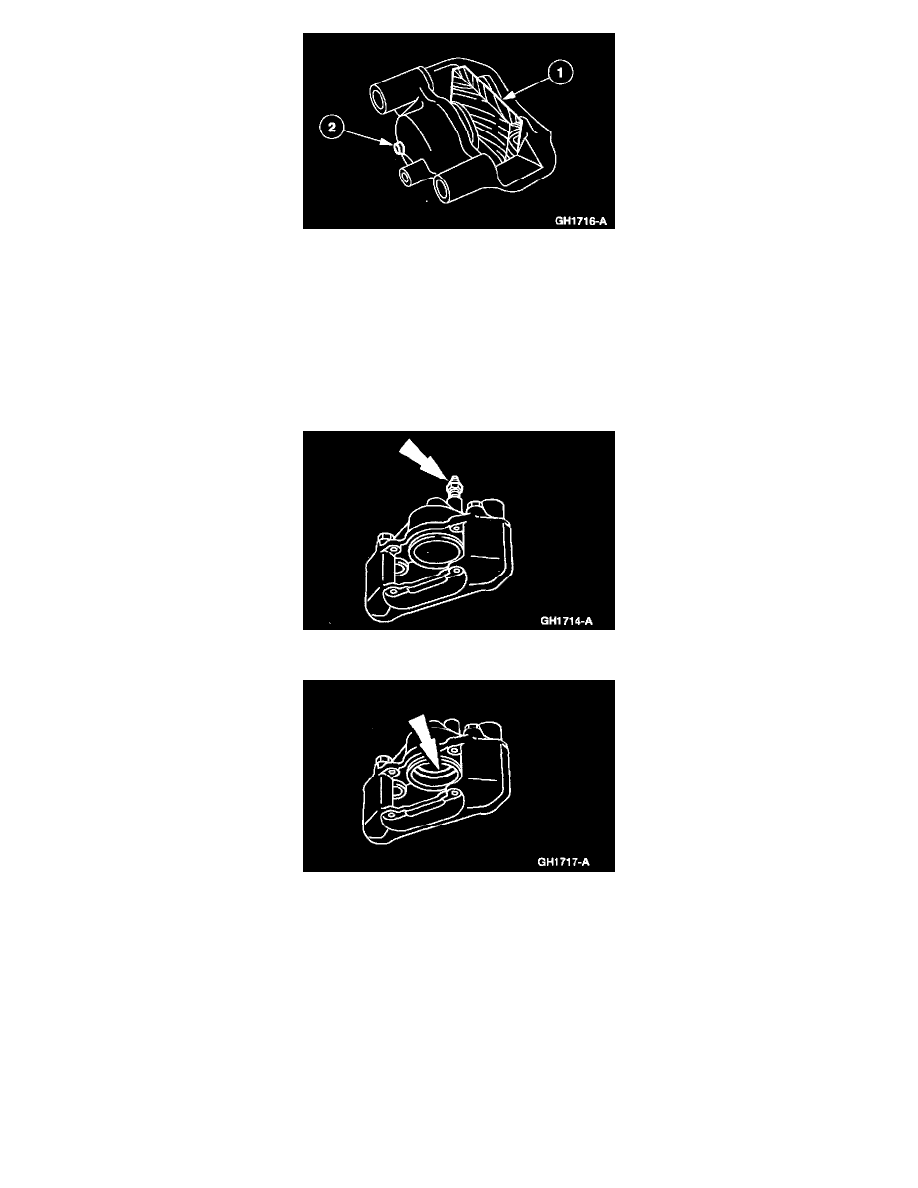Escort ZX2 L4-2.0L DOHC VIN 3 (2000)

4. WARNING: Use only as much compressed air as necessary to remove the piston. Excessive pressure can force the piston out of the
caliper bore with enough force to cause personal injury. Never attempt to catch the piston by hand as it comes out of the bore.
CAUTION: Do not use a screwdriver or any other similar tool to pry the piston out of the bore. Piston damage could result.
Note: Inspect the piston for wear, rust, or pits. If any of these conditions exist, the piston must be replaced.
Remove the caliper piston.
1
Position a block of wood between the piston and the disc brake caliper.
2
Apply compressed air to caliper to remove piston.
5. Remove the bleeder screw.
6. CAUTION: Use a plastic or wooden pick to remove the piston seal from the caliper bore. A metal tool may scratch or nick the seal groove, which
could result in a seal leak.
Note: Inspect the caliper bore for wear, rust, or pits. If any of these conditions exist, do not hone; the caliper must be replaced.
Remove the piston seal.
Assembly
1. CAUTION: Do not use denatured alcohol to clean rubber components or assemblies that have rubber components.
Cleaning rubber components with denatured alcohol weakens the rubber and may result in failure of the component.
CAUTION: Never allow any petroleum product or mineral oil to contact the inside of a brake hydraulic system. Mineral oil and petroleum
products deteriorate the natural rubber seals used in brake hydraulic system. If a brake system becomes contaminated, it must be flushed with clean
brake fluid and all rubber seals and flex hoses replaced. Use High Performance DOT 3 Brake Fluid C6AZ-19542-AB or equivalent meeting Ford
